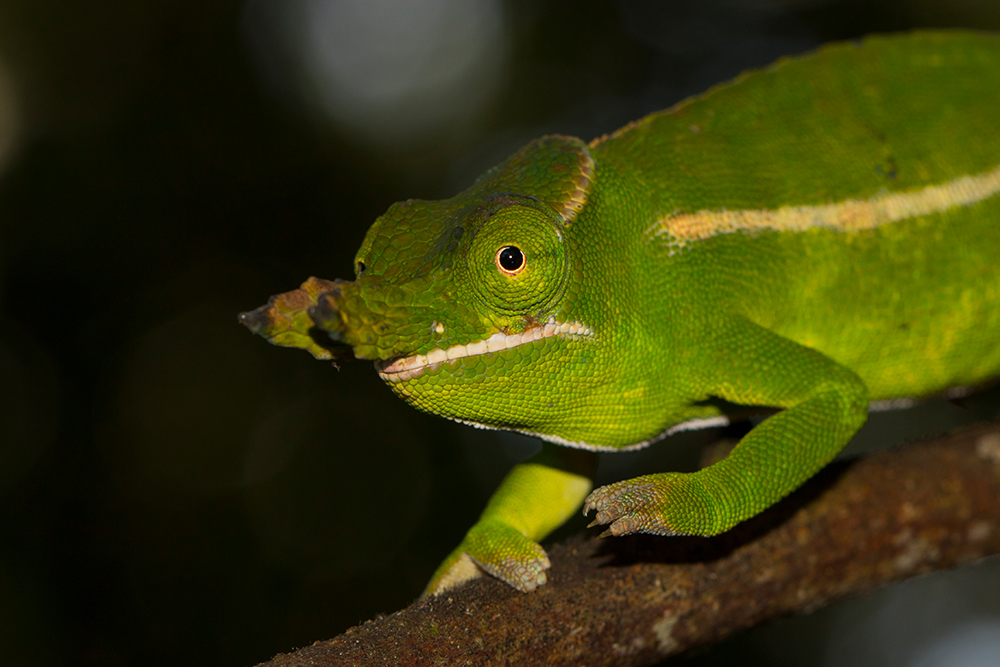The Bobaomby complex is located at the northernmost tip of Madagascar, north and west of the largest coastal town in the north, Antsiranana (Diego Suarez in French). It consists of dry forest at sea level up to a maximum of 200 metres above sea level as well as extensive savannahs on karst rock and various rock formations. The area has not been protected to date.
Scientists from Madagascar conducted reptile counts in the Bobaomby complex in 2018. The counts were carried out in February and March, i.e. during the rainy season. Five different locations were analysed: Beantely, Antsisikala and Ambanililabe as examples of varying degrees of degraded dry forest, Anjiabe for its intact dry forest and Ampombofofo with relatively intact forest. To find animals, the visual survey was used on 25 days during the day and at night in selected transects, sometimes specifically in suitable habitats such as leaf axils or under dead tree trunks, and pitfall traps along erected fences were also used.
A total of 42 reptile species have been recorded. All of them, except one gecko species, originally only occur on Madagascar, while two other gecko species are now also found on neighbouring islands. There is a small novelty among the chameleons: the leaf chameleon Brookesia ebenaui was recorded for the first time in Bobaomby, more precisely in Beantely. Brookesia stumpffi and Furcifer petteri were found in Beantely, Anjiabe and Ampombofofo. Furcifer pardalis and Furcifer oustaleti occurred as expected throughout the whole Bobaomby complex.
The authors suggest that the Bobaomby complex – especially the three forests where most of the reptiles were found – should be protected to preserve the local herpetofauna.
Overview of reptile diversity from Bobaomby complex, northern tip of Madagascar
Randriamialisoa, Raphali R. Andriantsimanarilafy, Alain J. Rakotondrina, Josué A. Rakotoarisoa, Nasaina T. Ranaivoson, Jeanneney Rabearivony, Achille P. Raselimanana
Animals 13: 3396, 2023
DOI: 10.3390/ani13213396
Photo: Furcifer petteri, male, in the north of Madagascar, photographed by Alex Laube




